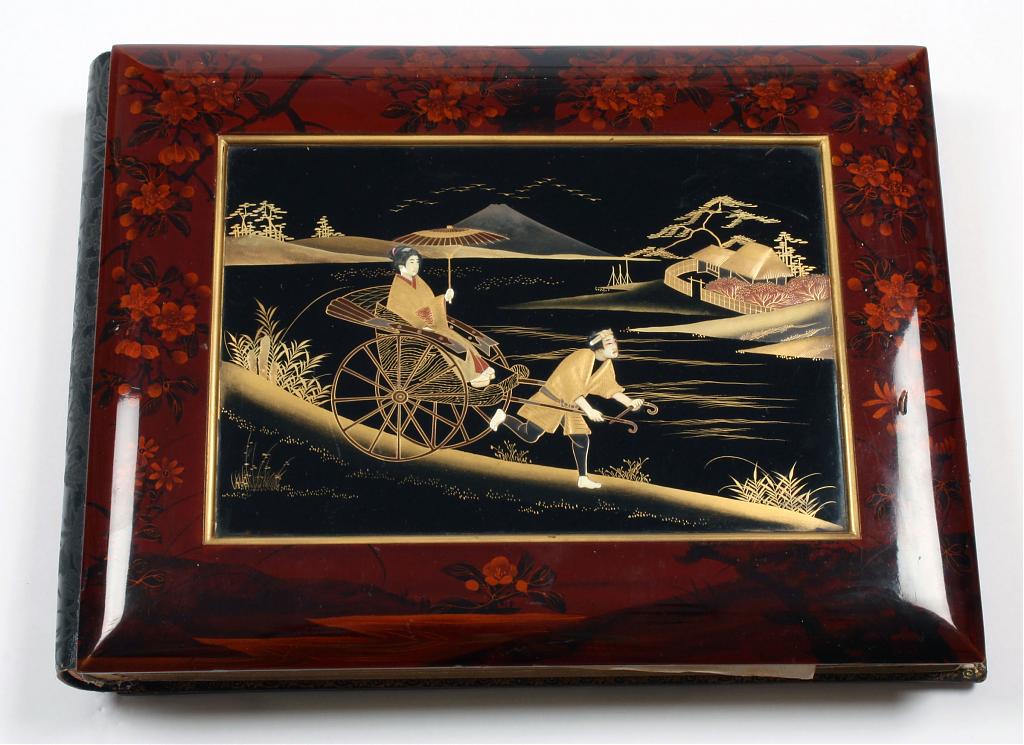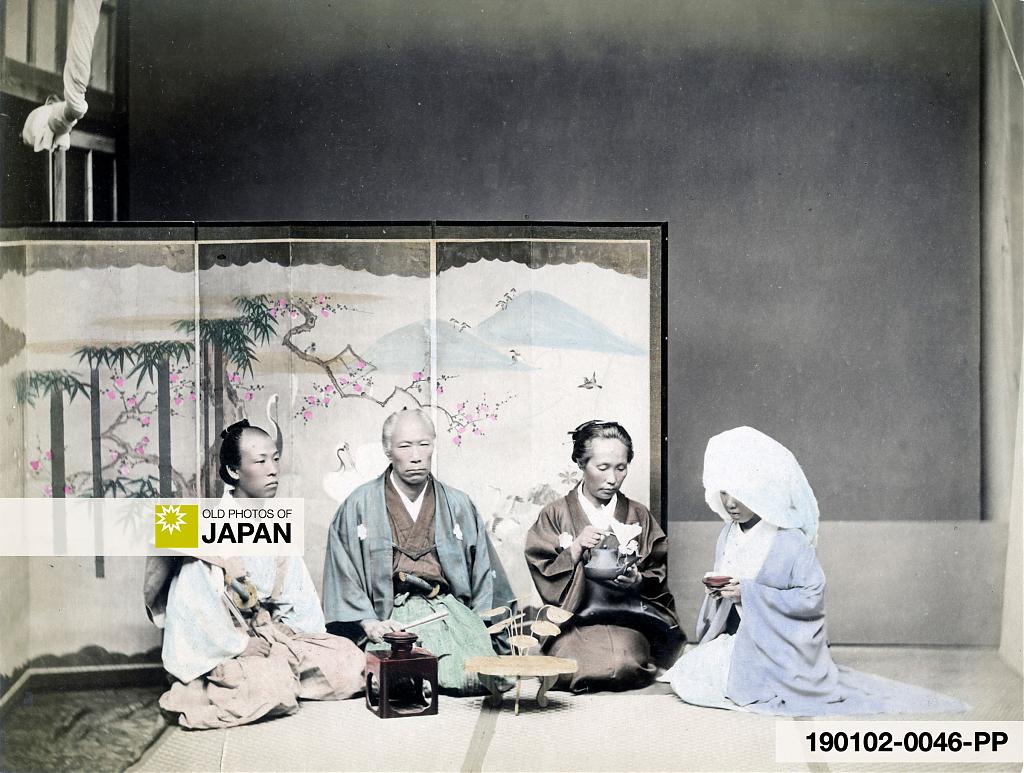These five women posing in the photographer’s studio as if having tea at home look a bit forlorn. Maybe the photographer took a bit too much time?
Photographs like this one were known as Yokohama Shashin (横浜写真, Yokohama Photographs) and were geared at the tourist market. The photos were so called because many photographers creating this kind of work were based in Yokohama, the port of entry for most travellers to Japan.
After the Meiji government established itself in 1868, travel restrictions to Japan were eased. This happened just as a modern version of the Grand Tour custom developed. This was eagerly adopted by people who had the financial means to travel, now much faster, easier and safer thanks to railways and steamships. Foreign tourists were especially attracted to “mysterious” Japan which had been closed to foreigners for over two centuries.
Enterprising photographers like Felice Beato, Baron Raimund von Stillfried, Kimbei Kusakabe, Nobukuni Enami, Kozaburo Tamamura and others quickly noticed this burgeoning tourist market and seized upon it. Photographs of Japan soon became a required souvenir. They were usually sold in beautifully lacquered albums inlaid with ivory containing twenty-five, fifty or a hundred prints which generally measured around 19 × 26 cm (7.5 × 10 inches).

Foreign tourists had little interest in the modernization that was quickly taking hold in Japan and this was reflected in the photographs they purchased. Relatively few photographs show trains, steamboats and other Western influences. Instead, tourists selected photographs of a way of life that appeared to be quickly disappearing. Japan’s traditional culture also appealed to the romantic sensibilities of the Victorian age with its idealization of idyllic traditional societies.
The characteristics of Japanese tourist photography were first established by Italian–British photographer Felice Beato (1832–1909) who lived in Japan between 1863 and 1884. He hand colored his photographs and mounted them in albums, initially with long descriptions. Many of the themes that he first developed, such as particular types of people, and aspects of traditional life, were carefully emulated by later photographers. Sometimes so slavishly that people are posed in almost the exact same manner.
The photograph of the women drinking tea dates from the 1890s and follows this system carefully. The kimono-clad women sit on tatami rice mats and are surrounded by a hibachi, teapot and cups.
The two interpretations of Japanese wedding rituals below illustrate how different photographers followed an established theme to slavish extremes. Both images were carried in Kimbei Kusakabe’s catalogue as 66. Wedding Ceremony. Most likely, Kimbei first carried Yamamoto’s photo in his catalogue, and replaced this later with his own version.


Published
Updated
Reader Supported
Old Photos of Japan aims to be your personal museum for Japan's visual heritage and to bring the experiences of everyday life in old Japan to you.
To enhance our understanding of Japanese culture and society I track down, acquire, archive, and research images of everyday life, and give them context.
I share what I have found for free on this site, without ads or selling your data.
Your support helps me to continue doing so, and ensures that this exceptional visual heritage will not be lost and forgotten.
Thank you,
Kjeld Duits
Reference for Citations
Duits, Kjeld (). 1890s: Women Having Tea, OLD PHOTOS of JAPAN. Retrieved on December 12, 2025 (GMT) from https://www.oldphotosjapan.com/photos/713/women-having-tea




There are currently no comments on this article.